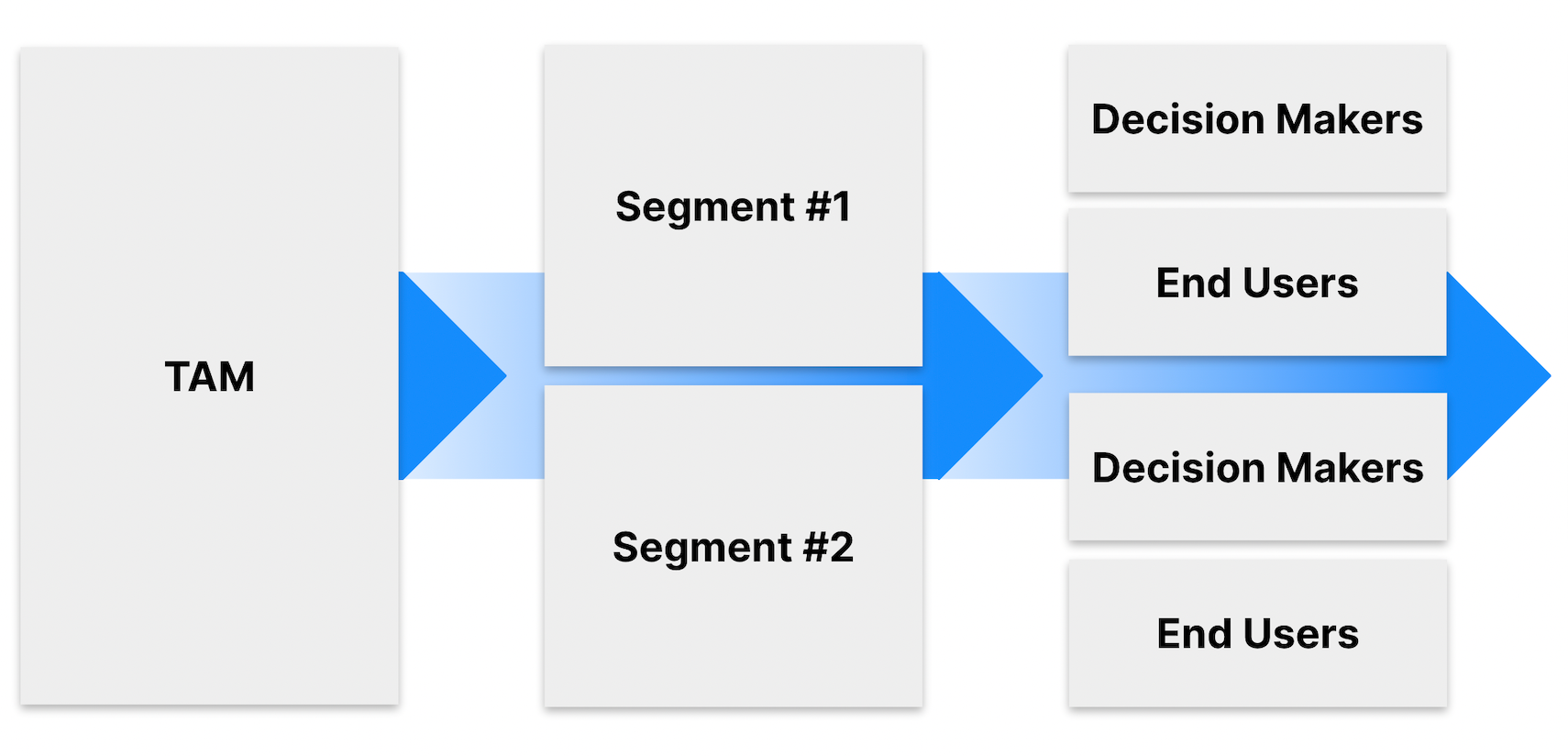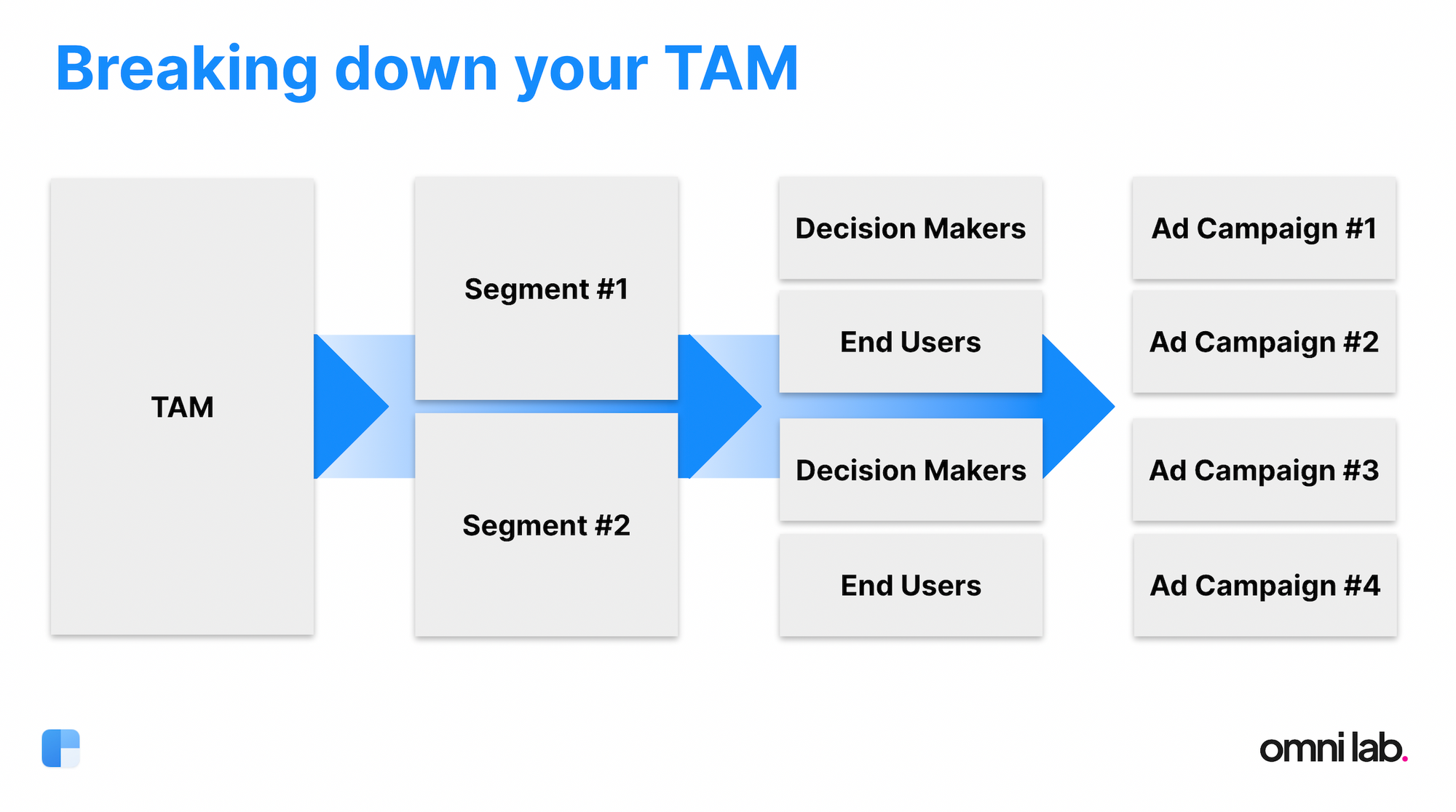How to create & activate your ICP for more efficient B2B ad campaigns
When it comes to ad budget, the best way to stretch a dollar is to get a perfect match between the ad’s message and the person seeing it. This is why targeting and personalization are part of Marketing 101.
But even if you have an idea who you want to target, finding and reaching them online can be a very different story.
In the post, we’ll show you how to:
- Define your ideal customer profile (ICP) based on past data about what’s worked for your business.
- Segment the ICP for improved targeting power.
- Plug your new, data-driven ICP definition into Clearbit’s Data Activation Platform, which will prospect for new companies and people that match your target. This creates custom audiences to send to ad platforms like Facebook and Google.
We call this “activating your ICP” — closing that gap between the ICP definition persona sketch snoozing on a slide deck somewhere, and the real people you’re trying to reach in the world.
A data-driven ICP lets you create different marketing journeys that speak to each segment, and that’s the key to getting more results from the same ad spend. As Jonathan Bland, cofounder of demand agency Omni Lab, puts it, “I could have the best creative, the best offer. But if it’s targeted at the wrong person, no dice.”
How to reverse-engineer your ICP
Here’s how to reverse-engineer your ICP and its segments — and apply them in Clearbit’s Data Activation Platform.
Step 1: Define your success criteria
First, sit down and reflect on what your business is trying to accomplish at its current life stage. Consider how your ideal customer can help you get closer to those goals. This will help you define success criteria for your ideal customer.
For example, if your goal is to maximize revenue growth, your success metric might be defined as clients with:
- high ACV
- low CPA and ease of conversion
- or simply everyone on your closed-won list
But if your business cares most about sustainability and retaining long-term customers, your success metric might be high LTV, low churn risk, or cross-sell potential.
Step 2: Look at the past
Once you’ve decided on your success criteria, look to see which of your past customers match them. Pull closed-won reports in Salesforce plus any CSM reports you need to help you find them.
This is the reverse-engineering piece: you’re looking for a shortlist of previous and current customers who have contributed to your business in the same way you’re trying to grow.
Note that because this method is based on past data, it doesn’t work as well for moving into new segments or new industries where you haven’t had many customers yet.
The reverse-engineering method is most effective for companies seeking to sell within a market in which they have already been operating — and in which there is still market share left to capture.
Step 3: Analyze for shared traits
Next, analyze that customer shortlist to spot shared firmographic and technographic traits, looking for patterns and relationships that may exist between those customers. Are they all of a certain company size? A certain industry?
How can you recognize more of those companies?
Incorporate feedback from your sales and CS teams, who talk to customers day in and day out. Colin White, Clearbit’s Head of Demand Gen, says, “Some traits can’t be found in firmographic data or are not obvious. Talking to your sales and CS teams can help you get that first layer of companies you should be looking for.”
At Clearbit in 2020, we did a reverse-engineering ICP exercise at a time when we wanted to maximize LTV and long-term customer relationships. When we looked at our shortlist of customers with high LTV, we saw that they shared similar revenue, size, and Alexa Rank.
Step 4: Create a silhouette of your ideal customer
The next step is to use the shared traits you’ve unearthed to create a silhouette of your future ICP. It might sound something like this:
“B2B SaaS companies that use Hubspot, have 50–1,000 employees, and have at least $10 million in funding”
or
“eCommerce companies in the US that use Shopify and have over 50 employees”
Now that you have a rough picture of your ICP, you can take those attributes to the Clearbit Data Activation Platform to create advertising audiences of net-new prospects that look like your ICP. But before you do so, we recommend you get even more refined with your targeting.
Step 5: Identify sub-segments within your ICP
For even more personalized and targeted campaigns, identify sub-segments of your ICP and create personalized buyer journeys for them.
For example, if your company sells a slightly different product to sales teams and marketing teams, those are good candidates for two different ICP segments.

Your ICP becomes even more targetable because it now has two groups:
- “Marketing teams at B2B SaaS companies that use Hubspot, have 50-1,000 employees, and have at least $10 million in funding”
- “Sales teams at B2B SaaS companies that use Hubspot, have 50-1,000 employees, and have at least $10 million in funding”
In the Clearbit Data Activation Platform, plug in the firmographic, technographic, and employee attributes for each of these segments — there are over 100 to work with.
For example, you can use Employment Role criteria to target employees in different departments for different campaigns.
You can even get specific about the type of marketing or sales role you’d like an employee to have — for example, a “content marketing” role versus a “channel marketing” role.
Step 6: Break down segments into personas
Next, get even more targeted. Split the segments into decision makers versus end users.

End users are the employees who actually use your product in their day-to-day work (e.g., designers). Decision makers are the people who sign the checks (e.g., the head of design, or a finance lead).
B2B SaaS companies often make the mistake of only targeting one or the other, but they both play important roles in purchasing software.
End users will evaluate your product for its usability, escalate your product to buyers, and advocate for their sign-off to buy it. Meanwhile, decision makers will be evaluating aspects such as pricing, security, and compatibility with other company systems. This is why it’s so important to develop separate messaging and marketing journeys for different personas and segments: they’re looking for different things.
Don’t forget this step if your company has a product-led model with a free signup or trial path. As you move upmarket, your users will be less likely to be your buyers.
In the Clearbit Data Activation Platform, you can define users and buyers with criteria such as Employment Seniority, where the higher-level titles like “Director” or “Executive” are more likely to be decision makers.
You can also use the Employment Role to target a department that contains users and their software-buying bosses — like marketing, design, or engineering. Or, you can use it to target a department that contains decision makers who sign off on purchases for other teams — such as finance, ops, IT, or HR.
Step 7: Use exclusion criteria
The beauty of figuring out who you want to target means you can save money on who you don’t want to target.
As you activate your ICP by plugging its attributes into the Data Activation Platform, you can also specify attributes that will disqualify someone from making it into your ad audience.
For example, if you want to target ecommerce managers at online retailers using Shopify, you can also specify that you don’t want to target SaaS companies.
Tailor ad campaigns to each ICP segment
So you’ve isolated a list of traits that describe the companies you want to target, as well as the employee groups within them. The next step? Create different marketing journeys for each segment you’ve defined in Clearbit — so you can serve them different ad creatives that address the things they care about. Same goes for email campaigns, automated sales outreach, and more.

To activate your ICP, plug your segments’ traits into the Clearbit Data Activation Platform to prospect for companies and people in Clearbit’s universe. The platform will create custom audiences you can send to Google, Facebook, and other tools.
Here’s an example of how we'd target a Facebook ad campaign to support our HubSpot integration. Our target criteria for our key audience segment looks like this:
- Company: B2B SaaS companies in the US that use Hubspot and have 50-1,000 employees
- Department: Marketing
- Persona: Decision maker
Then we'll plug those traits into the Data Activation Platform.
Next, we'll sync the audience to Facebook Advertising, creating a Facebook Custom Audience.
Once that segment is in Facebook, we can show them a very specific set of ad creatives, designed to resonate with marketing decision makers at our ICP companies.
Beat bad targeting with a reverse-engineered, data-driven ICP
Targeting is one of the most important levers for cost-effective ads.
For better targeting, reverse-engineer your ICP by looking at your historical customer data and enriching it with Clearbit’s firmographic and technographic data. Spot the attributes they share and compile them into a list. That’s your ICP.
Don’t forget to go one step further: segment your ICP into smaller groups who need their own set of marketing messages — like decision makers, or different departments.
Then, take the traits that describe your segments and plug them into the Clearbit Data Activation Platform. This lets you create multiple prospect audiences that match your ICP segments, which you can sync to ad platforms.
When you tell an ad platform exactly who you want to target, that’s what keeps costs down and gets the right message to the right person. Because a great match means a dollar well spent.

